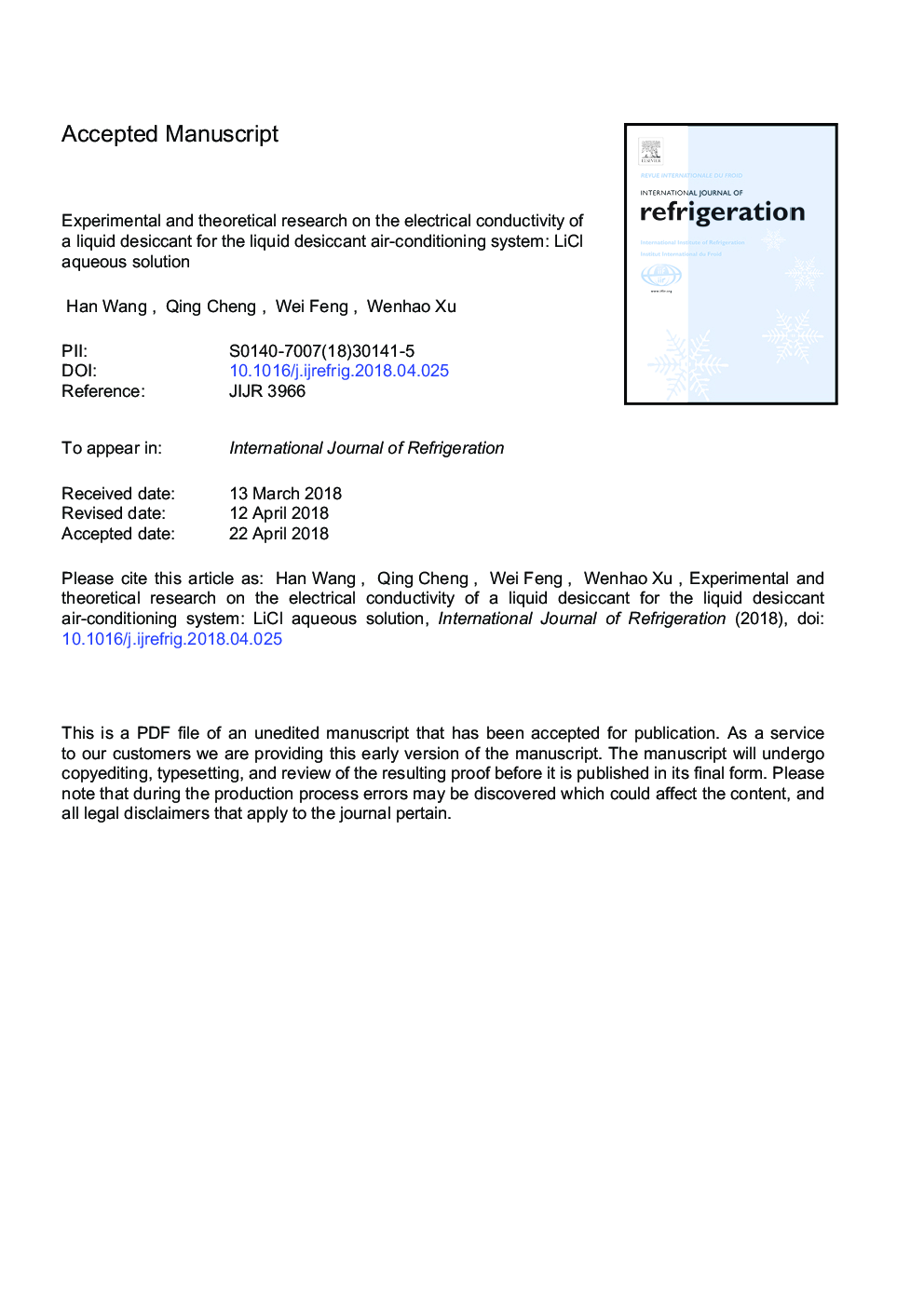| Article ID | Journal | Published Year | Pages | File Type |
|---|---|---|---|---|
| 7175238 | International Journal of Refrigeration | 2018 | 34 Pages |
Abstract
At present, the energy consumption in buildings occupies a large proportion of total energy use, and air-conditionings cost a large proportion of energy in the buildings. The liquid desiccant air-conditioning system has a good energy saving potential and the electrodialysis (ED) regeneration is a reliable choice for the liquid desiccant regeneration. In order to establish the energy consumption model and the performance coefficient model of liquid desiccant air-conditioning system based on ED regeneration using LiCl, experimental and theoretical research on the electrical conductivity of LiCl aqueous solution with a lot of concentrations and temperatures was conducted in this paper. The results show that when polynomial degrees of the mass concentration and the temperature of the LiCl aqueous solution are both 3, the electrical conductivity model for the LiCl aqueous solution is most suitable as its simplicity and high accuracy. Moreover, when the concentration is 36% and the temperature is 22°C, the liquid desiccant cooling system has the maximum COP of about 5. Finally, a case study of a small office room was conducted, and the result shows that the liquid desiccant cooling system based on electrodialysis regeneration has a good energy-saving potential.
Keywords
Related Topics
Physical Sciences and Engineering
Engineering
Mechanical Engineering
Authors
Wang Han, Cheng Qing, Feng Wei, Xu Wenhao,
